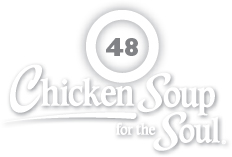
Tell me and I forget, teach me and I may remember, involve me and I learn.
~Benjamin Franklin
My daughter, Katie, was in third grade when she became an American. Oh, she may have been a legally born citizen for nine years, but this was when her heart became quintessentially “American.”
Katie’s class had been studying the Pilgrims and how they had only survived through the friendship of the Native Americans. My daughter was fascinated by how the Wampanoag people had taught the English how to use fish as fertilizer and grow native corn. Her imagination was stirred by the additional suffering and hardship averted by this act of kindness from the original Americans. She also learned Thanksgiving was a feast of appreciation that we repeat every year in honor of this act of kindness.
To celebrate their studies, the class was going to create their own Thanksgiving feast and had agreed to try some of the recipes from that first celebration. Katie and her best friend, Vera, were on a team together. Their job was to make corn on the cob. Best friends since kindergarten, they were a study in opposites. Vera was a tiny, black-haired beauty with dark eyes and a rich, brown complexion. Katie was tall and blond, reflecting her English heritage, with hazel eyes and golden skin.
As the girls worked, talk turned to family feasts and what everyone was doing for Thanksgiving. Vera was silent in class, but later confessed that her mom “wasn’t sure” about Thanksgiving.
Vera’s mother had come from Mexico and was part Native American. After working as a veterinary assistant for decades to raise her large family as a single mom, Vera’s mother was going blind, had consequently lost her job, and was struggling to provide for her youngest three kids. Decades of giving to others and sharing all she had had created a large network of supporters who felt honored to give back to this remarkable woman and her children. But despite their help and her church’s help, times were hard. Vera confided in Katie that not only would she not be having a feast for Thanksgiving, but she might not even be eating.
Katie was appalled and came home determined to do something about it. She emptied her piggybank while her sister and brother chipped in as they could. Too often our family had been the recipients of others’ charity; now it was our turn to give back.
We bought a turkey and fixings for mashed potatoes, gravy, stuffing, and sweet potatoes. In honor of their class project, we bought corn on the cob. We baked pumpkin pies and made cranberry sauce.
The Wednesday before Thanksgiving, I made our family feast (except the turkey), packed it in aluminum tins and stacked it all in the refrigerator.
Thanksgiving morning, we were all up at the crack of dawn to create a new feast for Vera’s family. We put their turkey in to bake and began making all the sides so they would be warm and fresh.
With her brother, sister and me, Katie directed the cooking as we sang and danced and played in the kitchen, so pleased at the wonderful surprise we were preparing for Vera’s family.
“You know what’s funny?” Katie asked as we chopped and measured and stirred.
“No, what?” I asked.
“It’s turn-about,” she said.
“Well, the Native Americans helped the English Pilgrims on Thanksgiving, right?” Katie ventured.
“Right . . .”
“Well, now the English get to help the Native Americans!” Kate said, laughing at her own joke.
Soon, we had beans and corn, sweet and mashed potatoes, pie and cranberry sauce all packaged up and smelling of sweetness, spices, and love. The beautiful, hot turkey was centered on a plastic platter and surrounded by carrots and onions. We’d replaced Vera’s turkey in the oven with our own and set it to roasting while we headed over to Katie’s friend’s house.
Everything had been put in cardboard boxes so we could play a game of “Ding-Dong Dash” to deliver it. And, with her brother and sister, Katie quietly sneaked up to Vera’s door, going around the side of the house so as not to be seen from the picture window in the living room, and silently set the boxes on the stoop.
Her brother and sister circled back and got into the car. We started the engine with the passenger door open so that Katie could jump in, and we could drive off.
Then Katie looked to the car for the “high-sign” that we were ready to go. She’d been hunched down on the stoop to make sure no one could see her standing at the door.
As we signaled, Katie reached up, rang the bell — and ran! She jumped in the car, and off we drove. Just as we turned the corner, Katie’s brother called out, “They’ve opened the door!”
And our deed was done.
We never told a soul. And, in fact, I changed Vera’s name here so as to not give us away.
When Vera came back to school, she did ask Katie if she knew anything about her special delivery.
“How could we help you, Vera?” Katie replied. “You know we can barely take care of ourselves.”
And, with that, Vera dropped it.
But what I can’t drop is what happened to my daughter that day. For that was the day she exhibited all the best traits of Americans — caring, compassion, loyalty, resourcefulness, and kindness . . . above all else, kindness.
Yes, Katie may have been born a citizen, but it was on Thanksgiving of her ninth year that my child really, truly became an American.
~Susan Traugh
